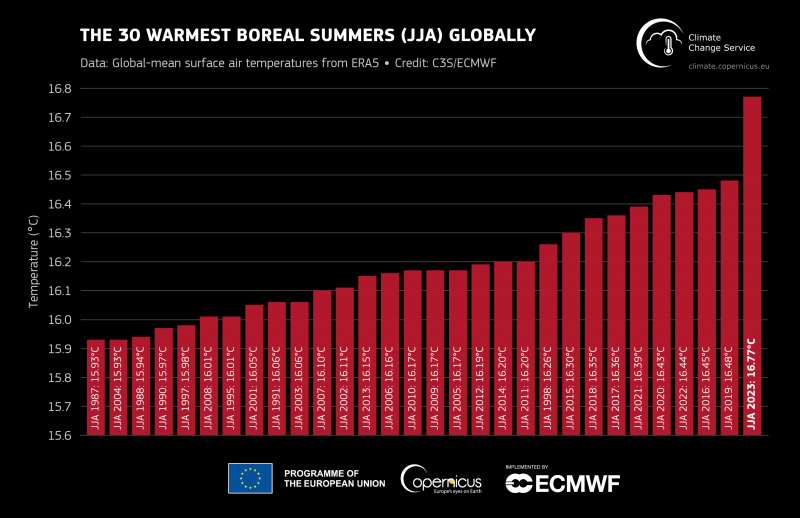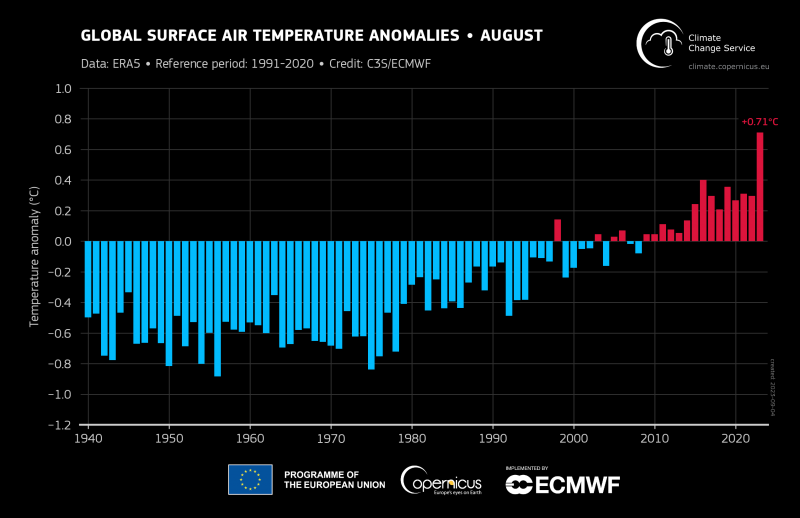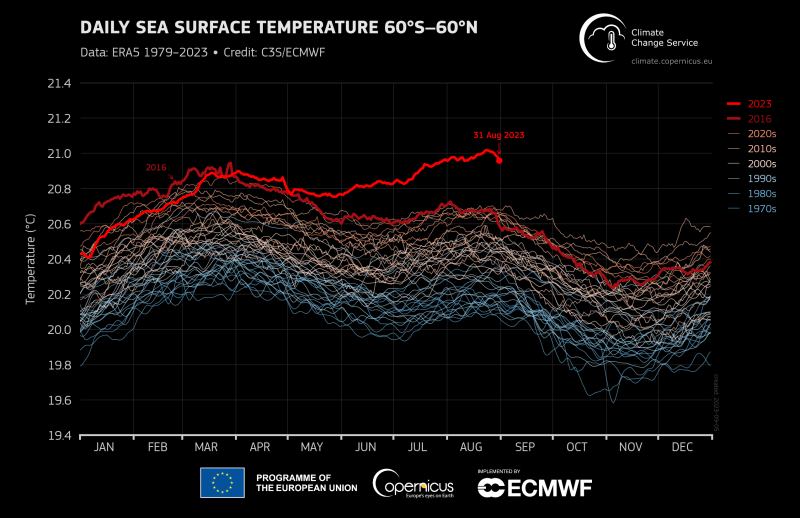
The hottest 3 months for Earth on record
The World Meteorological Organization announced on September 6, 2023, that Earth just had its hottest three months on record. August was 2.7 degrees F (1.5 C) warmer than the preindustrial average for 1850-1900. It was the hottest August on record, and August was the second-hottest month ever, behind July 2023.
Not only was this Northern Hemisphere summer a scorcher, but so far 2023 is the second hottest year on record, behind 2016. In 2016, temperatures were affected by a powerful El Niño. And scientists say we’re heading into an El Niño year now.
The World Meteorological Organization Secretary-General Petteri Taalas said:
The Northern Hemisphere just had a summer of extremes, with repeated heatwaves fueling devastating wildfires, harming health, disrupting daily lives and wreaking a lasting toll on the environment. In the Southern Hemisphere, Antarctic sea ice extent was literally off the charts, and the global sea surface temperature was once again at a new record. It is worth noting that this is happening before we see the full warming impact of the El Niño event, which typically plays out in the second year after it develops.
It’s hot in the sea, too
Earth’s oceans and poles were also warm the last three months. The WMO report said:
August as a whole saw the highest global monthly average sea surface temperatures on record across all months, at 20.98°C [69.76 F]. Temperatures exceeded the previous record (March 2016) every single day in August.
Antarctic sea ice extent remained at a record low level for the time of year, with a monthly value 12% below average, by far the largest negative anomaly for August since satellite observations began in the late 1970s. Arctic sea ice extent was 10% below average, but well above the record minimum of August 2012.
Earth is getting hotter
Officials didn’t mince words about what the past three hot months signal. UN Secretary-General António Guterres said:
Our planet has just endured a season of simmering: the hottest summer on record. Climate breakdown has begun. Scientists have long warned what our fossil fuel addiction will unleash. Surging temperatures demand a surge in action. Leaders must turn up the heat now for climate solutions. We can still avoid the worst of climate chaos, and we don’t have a moment to lose.
The Washington Post recently reported some positive signs in civilization’s efforts against climate change. You can read more about those advances here.
In addition, Carlo Buontempo, Director of the Copernicus Climate Change Service, ECMWF, said:
Eight months into 2023, so far we are experiencing the second warmest year to date, only fractionally cooler than 2016, and August was estimated to be around 1.5°C [2.7 F] warmer than pre-industrial levels. What we are observing, not only new extremes but the persistence of these record-breaking conditions, and the impacts these have on both people and planet, are a clear consequence of the warming of the climate system.
Our hot summer, in charts



Bottom line: The World Meteorological Organization said that the last three months were the hottest on record for Earth. See charts and hear what officials have to say.











